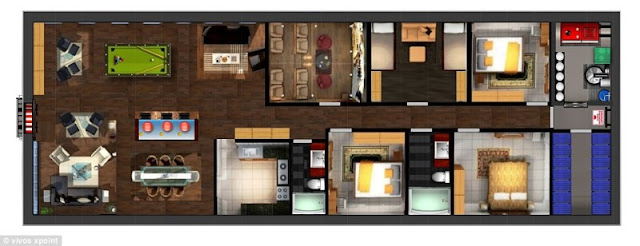Pakistan is blessed with myriad wonderful places that are filled with natural beauty. Numerous lovely Lakes are also the part of it. They are also playing an imperative role in improving the beauty of Pakistan. Lulusar Lake is also among these momentous lakes that are the favorite tourist spot for many. Lulusar Lake is located on Naran-Babusar Road, 50 km from Naran in the Kaghan Valley in the KPK province of Pakistan. Lulusar Lake is group of mountain peaks, and the highest peak has a height of 11,200 feet above sea level. Lulusar Lake at 3,410 meters is the primary source of water to Kunhar River. The lake water flows southwest through the entire length of Kaghan Valley passing Jalkhand, Naran, Kaghan, Jared, Paras, Kawai, Garihabib Ullah and Balakot until its confluence with the Jhelum River.
The extreme height of the mountains keeps Lulusar Lake covered in snow the year long. However the lake is located in a special zone where water can flow in some months of the year. The water color of Lulusar Lake is mesmerizing, the scenery, everything about it is so great. The word “sar” is a Pashto word means “top” or “peak”. On average tourist reach Lulusar Lake in 2 hours from Naran. The lake can see from right side of road. Lulusar Lake formed due to the blocking of Kunhar River sometimes in past. The same way Attabad Lake in Hunza was formed in 2010 due to massive landslide blocking Hunza River. The road to Lulusar Lake closed from November till May-June. Lulusar Lake is wreathed in blue and gold wild flowers enchanting beauty and its view remains in the mind of tourist for a long time.
Lulusar Lake water is crystal clear and it freezes during winter. The high mountains around the Lulusar Lake are davoid of trees as the lake is above the tree line. For food, tourist needs to go to a small village “Besal” five km downstream but has a good restaurant named "Moon Restaurant". Some animals are very common such as foxes, black bear, Himalayan snow cock, lynx, brown Bear and Himalayan Ibex as well. Hawks and other similar birds are also common, including Griffen Vultures of Himalaya, Falcon, and the Himalayan Monal. However, if the season is right, Russian & other migratory birds can also been seen nesting in some places. However, you just have to wait until their season of migration in order to be able to see these birds. The best time to visit Lulusar Lake is the beginning of summer as by the time summer passes, the lake would lose much of the snow near its adjacent mountains. The best time is, therefore, end May till end of June. After that Lulusar Lake will not have much snow, only the greenery will be seen.
It is highly recommend that rise early from Naran, go straight to Lulusar Lake and relish the lake for at least one hour. Then go to Babusar Top around 16 km more, 40 minutes’ drive from Lake. Then you can have spent one hour or more over there. On the return journey, take lunch at Besal (Moon Restaurant). Tourist can also enjoy staying a while at Payala Lake on Jalkhand. Then enjoy water fall near Naran, take a cup of tea at Kunhar River and then deep sleep at Naran. A tourist from New York said that she had travelled across the world but had no words to state the beauty of Lulusar Lake. It’s rare and very unique, has soothing environment. The nature is everywhere. Only fewer human beings are here and therefore, the place is so serene, and peaceful in the midst of high mountains and greenish meadows. The Lulusar Lake splendor is unaffected by pollution unlike Saiful Muluk, which has lost picturesqueness due to littering by visitors.
Lulusar Lake is famous due to its historic place where the fifty-five participants of the 1857 Indian war of independence were arrested and the lake is still remembered for that reason. Lulusar Lake is amazingly beautiful, serene and somewhat freaky Lulusar Lake. It’s a vast calm lake in the center of the valley, and made for a perfect backdrop for Instagram selfies and cover photos. Lulusar Lake is surrounded by snowcapped hills whose purple and white forms are reflected in the green-blue waters of the silent lake, making it one of the most beautiful spots in the valley. The Dudipatsar, Lulusar and Saiful Muluk are the most popular lakes in Naran/Kaghan. Dudipatsar needs tracking by foot obviously good for health. The Naran to Lulusar road is in excellent condition with a black-top with reasonable width and builds quality.
In summer Lulusar Lake is ultimate destination for many domestic and international visitors. Even though the park near to him is actually known as Lulusar-Dudipatsar National Park is also visited by many tourists. If you are planning to visit Naran/Kaghan, then it’s a must visit place. If you are going to Gilgit, then the visit can be kept on that day as the road is located right on Naran-Babusar-Gilgit Road. Tourists should carrying emergency supplies such as first aid kits and other medical supplies such as nausea tablets, as many people tend to get carsick on the mountain roads. Moreover, cars and jeeps of the area can be prone to falling apart, so make sure that the vehicle is reliable and technically sound. Also tourist demanded that the Pakistan government should preserve Lulusar Lake and other such tourist attractions in the district.
Source: CP
Source: CP






























































